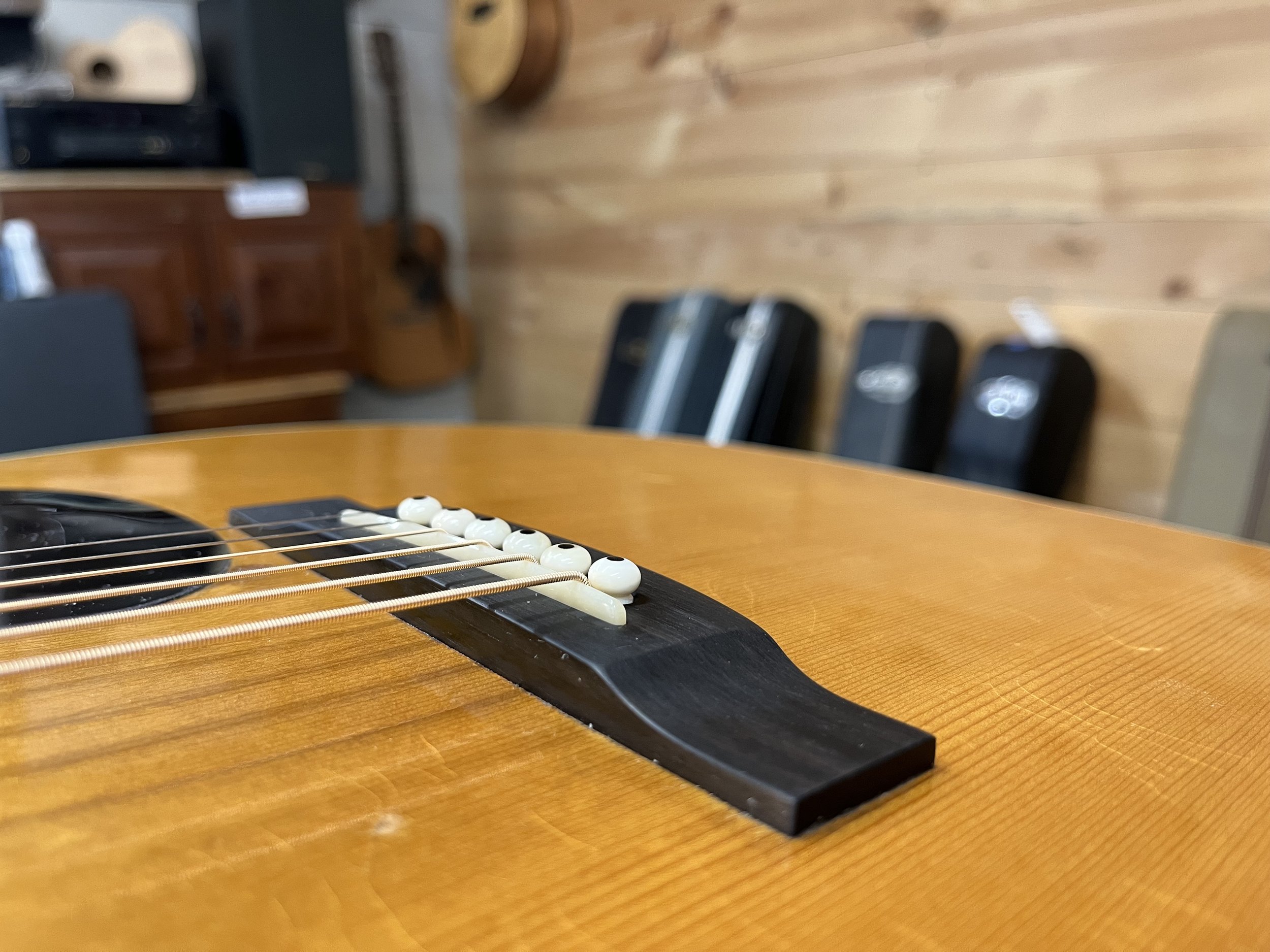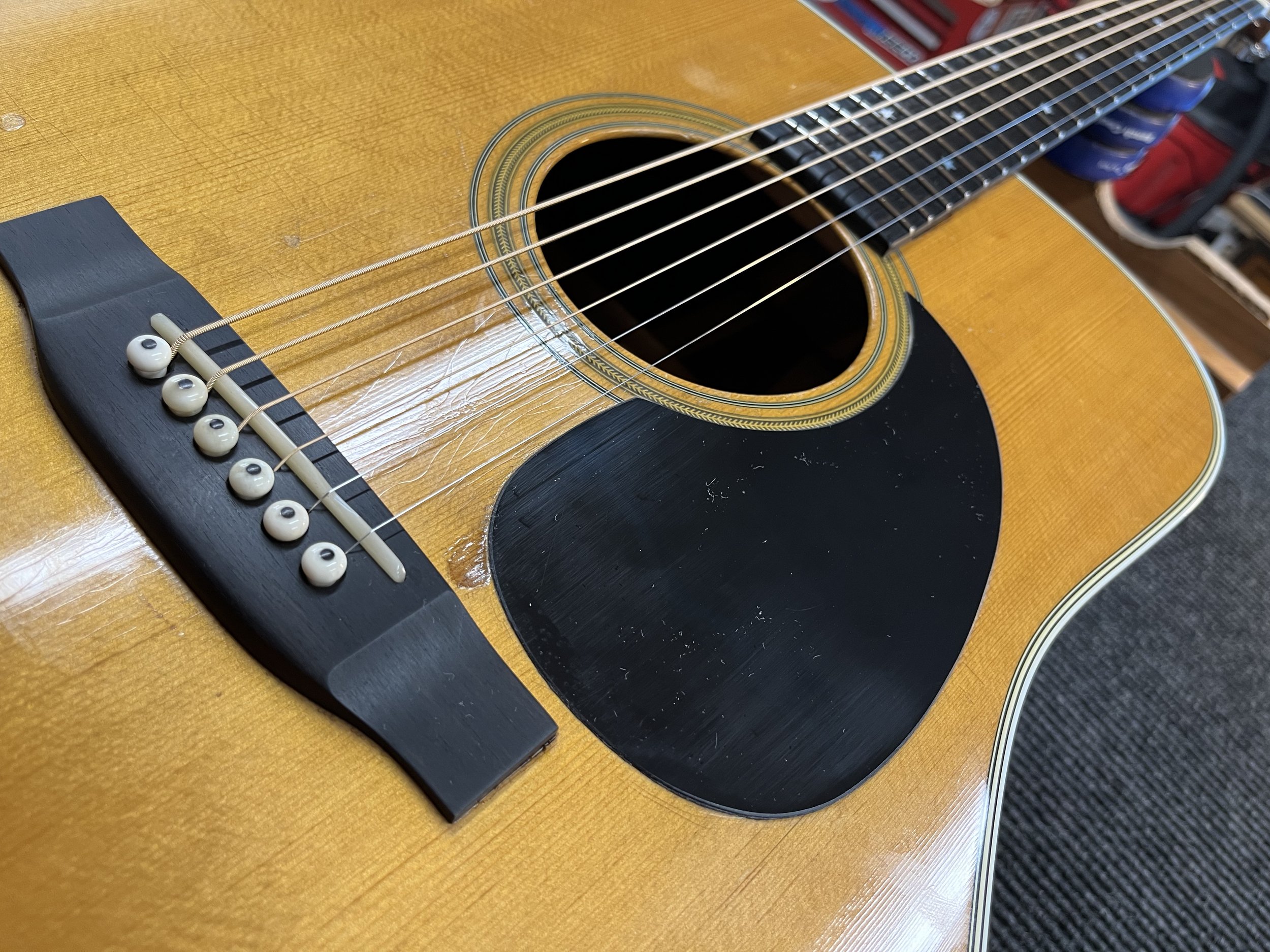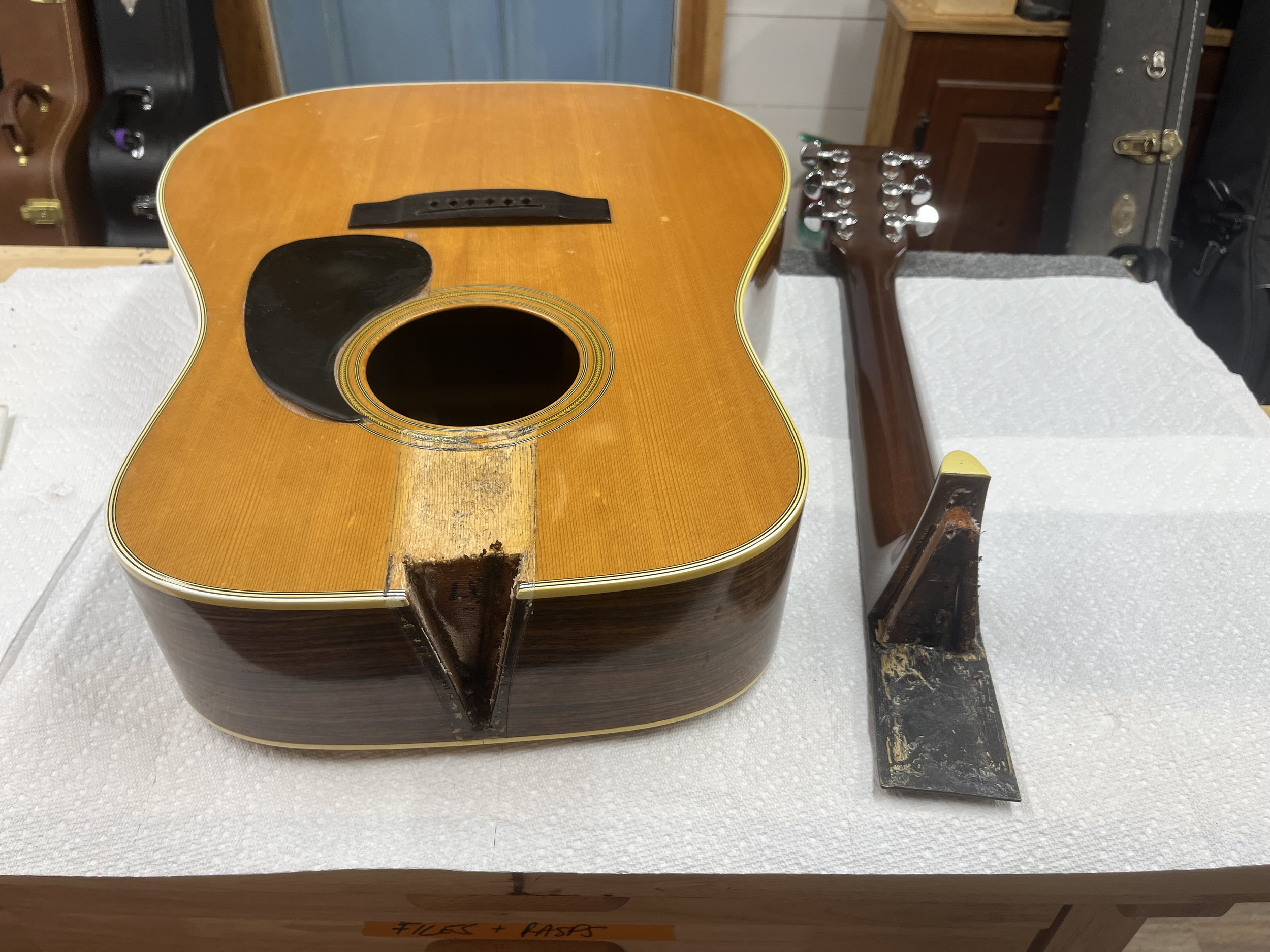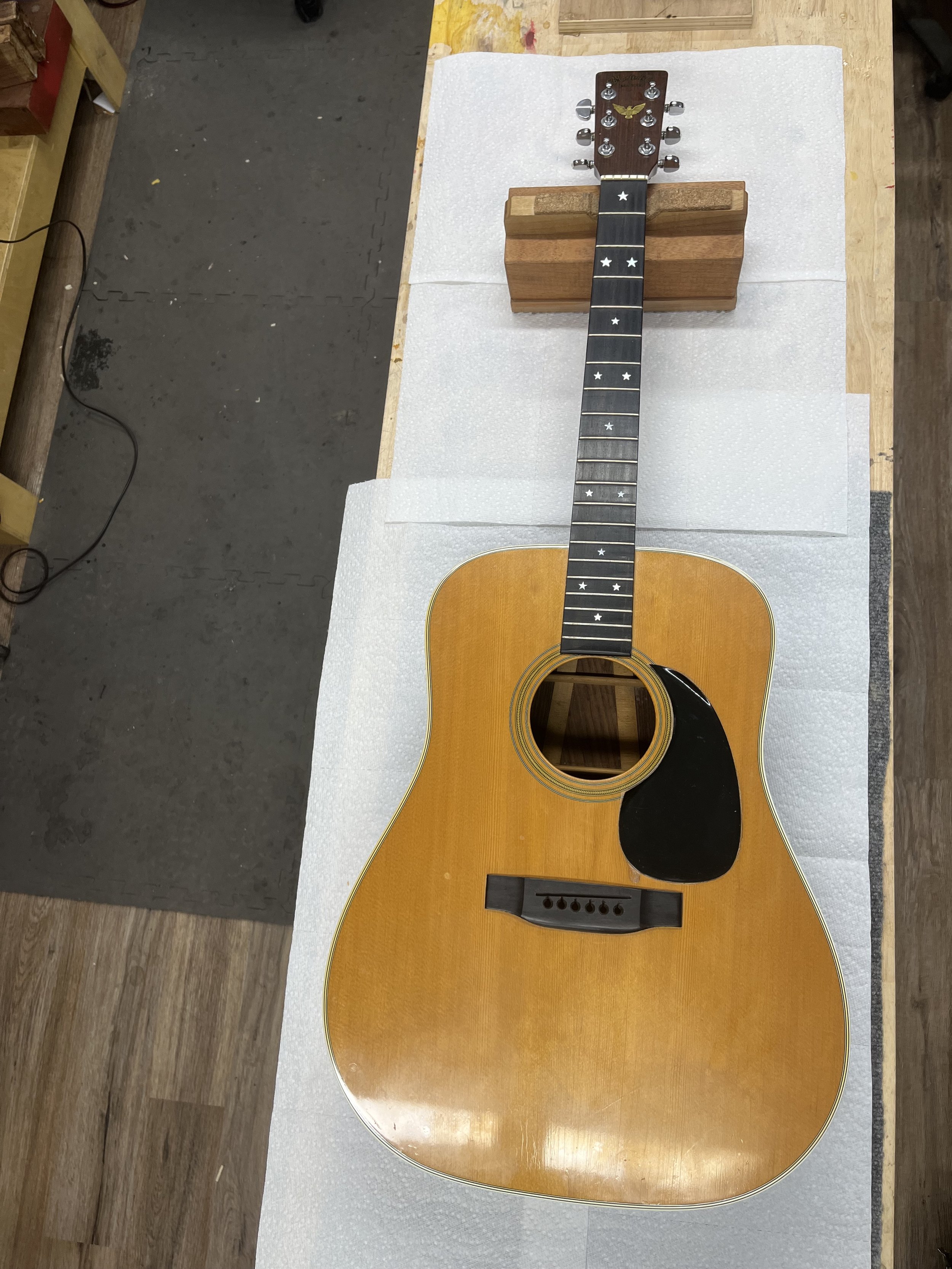Martin D-76 #447 of 1,776
Recently I had the opportunity to do some extensive repair work to a 1976 Martin D-76. The Martin D-76 was a limited edition run of guitars similar to the D-28 in specs, released by Martin to commemorate the bicentennial anniversary of the signing of the United States' Declaration of Independence.
Martin produced 1,976 of these special dreadnoughts and each feature an Indian Rosewood body with 3-piece back, mahogany neck, ebony bridge and fingerboard, mother of pearl star fretboard inlays as well as a unique engraved mother of pearl eagle in the headstock. The example that found its way to my work bench was number 447.
Owned by a local musician since the early 1980's, this particular D-76 arrived suffering from a warped and loose pick guard, top cracks beneath the pick guard and fingerboard extension, and excessively high action despite its low saddle height. It also showed excessive neck relief (forward bow) and well worn frets. The guitar had been previously repaired by The Music Emporium in Cambridge Massachusetts in 1993. It had received a neck re-set and re-fret, as well as having its saddle re-slotted in the ideal location for proper tuning accuracy (a common repair to 1970's-era Martins). In subsequent years the bridge had been lowered significantly in height to accommodate a lower height saddle in an effort to forestall an additional neck re-set.
After discussing these issues with the owner and establishing a budget, I began a lengthy restoration process. The bridge, neck and pick guard were carefully removed with dry heat. The top cracks were repaired and reinforced from within using hot hide glue. Next came the process of re-shaping the neck heel to achieve the optimum neck-to-body angle for proper bridge, saddle and string height and shims were added to the neck's dovetail tenon and fingerboard extension. These shims are made of maple and ebony, respectively. The neck was then re-attached using hot hide glue.
In an effort to keep the guitar as original as possible, I opted to repair and reuse the factory bridge by adding an ebony plate to it's bottom, shaped to its exact footprint and attached with a permanent adhesive impervious to heat in the event that the bridge needs re-glueing later in the guitar's life. This brought the bridge back to within Martin's factory height range. The saddle slot was also deepened to accept a proper height saddle and the bridge re-installed using more hot hide glue.
Finally the existing frets were removed and the fingerboard repaired and spot filled with matching ebony. During a previous re-fret the fingerboard had been thinned beyond factory specs and I had to take great care not to remove any more material from it's surface. I installed the new frets by hammer using a compression technique in order to gently return the neck to an ideal relief of .005" at the twelfth fret. Once fretted I brushed several coats of pure shellac onto the pick guard's footprint to prevent future cracking and also provide a smooth surface to which the pick guard could adhere. Finally I hand cut a new bone nut and saddle, added bone bridge pins and strung the guitar with .012"-.054" phosphor bronze strings. It was a pleasure returning this old Martin to it's optimum playability and sending it home to keep making music for years to come!





















